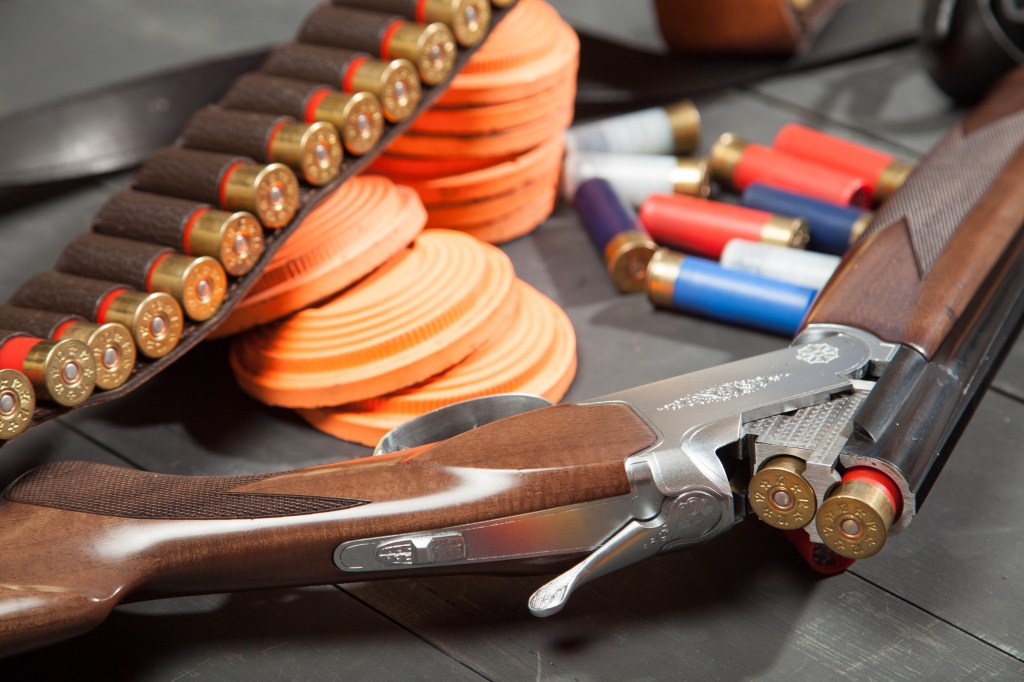Trap Shooting Tips & Techniques for Beginners
Trap shooting is a thrilling and challenging sport that takes focus, precision, and practice to master. It involves clay targets being projected into the air, and the players must take aim and shoot at the pigeons with their firearms.
What differentiates trap shooting from other sports, such as skeet or clay shooting? How does one become an expert at trap shooting? Whether you are a novice or an experienced shooter, this blog aims help you better understand the sport and to give you trap shooting tips to help you improve your trap shooting game.

What is the Difference Between Skeet Shooting, Trap Shooting, and Sporting Clays?
Trap shooting and skeet shooting are two different events, but they are commonly confused with one another. Just what is the difference between trap and skeet?
Skeet Shooting
Skeet involves the shooting of clay targets that are launched between two posts. There are eight stations in the field where the sport is set up, and each station is numbered. Shooters move around a semi-circle shaped field between the stations. There are two machines which release clay targets: the low house, which releases targets from three feet off the ground, and the high house, which releases targets from ten feet off the ground. Each shooter aims at one clay target from each house per station.
Trap Shooting
In this event, the trap shooters stand in a line and aim at targets which are released from a shooting station called the trap house that is partly underground. There are five stations total, and each trap shooter will change positions to fire at the target from each station. There are three different types of events in trap: singles, doubles, and handicap. In singles, one clay target is released from each trap house. In doubles, two birds are released from the trap house at the same time. In handicap, one clay target is released at a variety of different distances.
Sporting Clays
Another type of clay shooting is sporting clays. This particular game mimics a real-life hunting experience. The players move through a scenic and varied course. Stations in the course can include trap- and skeet-style targets, or something else entirely. Overall, this sport offers a more interesting and dynamic experience than skeet and trap.

Easy to Learn Trap Shooting Techniques
When trap shooting, there are special techniques that will help you become a more advanced trap shooter. Follow these trap shooting tips to improve your game!
Stance and Footwork
Your stance and footwork matter greatly when it comes to trap shooting. The goal of having the right position is to create one solid swinging motion toward the target. There are five positions and several foot placements within each position.
Be sure to have your feet shoulder width apart and point your toes in the same direction. Position your body in the direction that your target will be traveling. Ensure that your hips and shoulders are aligned and are facing the house or the target flight path. Your shoulders should turn with your hips, not against them.
Sight Alignment
It’s important to identify the window where the bunker sends out the shots. In general, the clay targets will fly into 2×3 foot windows about 15 yards out and three yards above the roof of the trap house. You’ll also want to use your gun to track the trap. Keeping your eyes on the trap target is key. It might help to imagine that the target is attached to the house with a string. This will help you track the path of the target.

The Right Trap Guns for Trap Shooting
When it comes to trap shooting, choosing the right weapon is essential. Here are some of the top choices for trap shooting guns.
Beretta 686 Silver Pigeon I Sporting Shotgun: This option is capable of shooting clays as well as actual birds, and is a budget-friendly option.
Browning Citori 725 Pro Sporting Shotgun: Many competitive shooters opt for this weapon, which is known for being incredibly durable.
Winchester Model 101 Deluxe Field Shotgun: This weapon is known for being incredibly reliable, and can easily transition from field to shooting range.
Remington 870 Express Trap: This durable 12-gauge weapon is a classic choice for trap shooters.
Benelli Sport II: This well-balanced weapon features strong and fast action.
CZ – USA All-American Single Trap: This reliable weapon requires minimal maintenance.
Common Trap Shooting Mistakes for Beginners
Beginning trap shooters often make mistakes when it comes to shooting! Here are some of the most common mistakes that novice shooters make.
Not Learning to Self-correct: After a miss, it’s important to correct your stance and try again. Don’t just keep trying the same stance and strategy if it isn’t working. Set your eyes on the target and watch your stance.
Checking the Lead: When the shooter checks the lead, they are looking at the spot between the target and the barrel. This places the target and barrel in your peripheral vision, and everything you see will be about 3 milliseconds behind real time.
Being Afraid: Many shooters will become concerned about how they look to others in the competition. This can switch your focus from trying to hit the target to simply trying not to miss. Ignore the people watching you and keep your focus on the game!
Ignoring Nutrition: Be sure to remain nourished and hydrated when competing in trap shooting. This has a huge impact on your performance!
Wasting Your Focus: Many novice shooters will fall into the bad habit of watching everyone else’s targets during their course. You only have a limited amount of sharp focus, and you should use it to focus on your own game!
FAQs
How do I know if I’m using the correct trap shooting stance?
Your feet should be shoulder width apart, and your toes should be pointed in the same direction. Position your body in the direction that your target will be traveling. Check that your hips and shoulders are aligned and are facing the house or the target flight path. Your shoulders should turn with your hips, not against them.
How can I improve my accuracy and consistency in shooting traps?
You can improve your trap shooting game by practicing regularly. Practice proper stance, shooting technique, and focus.
Can a coach or mentor help me develop my trap shooting technique?
A coach or mentor can certainly help you develop your technique! Consider taking shooting lessons so that you can learn from a pro.
Sources
http://www.differencebetween.net/miscellaneous/difference-between-skeet-and-trap/
